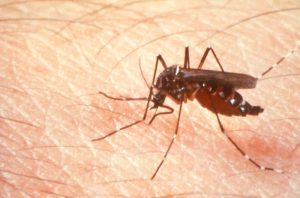NewsDesk @bactiman63
The National Ministry of Health reports that up to April 1, 28,235 cases of dengue were reported in the country, of which 25,419 acquired the infection in Argentina.

The circulation of this virus has been identified in 14 jurisdictions corresponding to three regions: Central Region (Buenos Aires; Autonomous City of Buenos Aires; Córdoba; Entre Ríos; Santa Fe); NEA region (Corrientes; Formosa; Chaco) and NOA region (Catamarca; Jujuy; La Rioja; Salta; Santiago del Estero and Tucumán).
Concerning chikungunya, 915 cases have been registered so far, of which 348 acquired the infection in the country; 306 are under investigation and 261 acquired the disease abroad. At the moment, the circulation of this virus has been confirmed in 7 jurisdictions: Buenos Aires; CABA; Chaco; Cordova; currents; Formosa and Santa Fe.
Dengue is a viral disease transmitted by the bite of the Aedes genus mosquito, mainly by Aedes aegypti. When the mosquito feeds on the blood of a person infected with the dengue virus, it acquires it and after 8 to 12 days it is capable of transmitting it to a healthy person through its bite.
Chikungunya fever is also a viral disease that, like the one mentioned above, is transmitted by the bite of infected Aedes mosquitoes. Its name means “one who stoops” and refers to the bent appearance that some people who suffer from it acquire because of the severe joint pain it causes.
Subscribe to Outbreak News TV on YouTube
Symptoms
With regard to dengue, the symptoms are fever accompanied by one or more of the following symptoms: pain behind the eyes; upside down; muscle and joints; nausea and vomiting; intense tiredness; appearance of spots on the skin and itching; bleeding nose and gums.

When diagnosed with dengue, it is necessary to follow the instructions of health personnel and attend follow-up and control consultations. If at the time the fever subsides or in the days that follow, any of the symptoms worsens, reappears, or new symptoms are detected (difficulty breathing, intense abdominal pain, profuse mucosal bleeding, irritability to drowsiness, recurrent vomiting), it is pertinent make an immediate medical consultation.
For its part, the symptoms of chikungunya fever generally begin 3 to 7 days after the mosquito bite. The most common symptom is the sudden onset of fever, often accompanied by joint pain. Other symptoms that may appear are: muscle pain; upside down; nausea; fatigue and skin rash. Severe joint pain usually lasts a few days, but can persist for months, affecting full recovery and return to daily activities.
For all the above, in the presence of any of these symptoms (both dengue and chikungunya) it is very important to consult a doctor early, not self-medicate and take measures to avoid mosquito bites and thus prevent them from continuing. transmitting the virus.
Dengue and chikungunya prevention measures
The main way these diseases are transmitted is through the bites of infected mosquitoes. That is why the most important dengue and chikungunya prevention measure is the elimination of all mosquito breeding sites, that is, all containers that contain water, both inside and around homes (buckets; basins ; drums; pot holders; drinkers; returnable bottles, etc.). If the containers cannot be removed because they are used frequently, mosquito access to their interior must be prevented (covering tanks, cisterns and/or cisterns, for example) or ensure that they do not accumulate water by turning them over; emptying and brushing them frequently, or putting them under shelter. It is also advisable to place mosquito netting on the drain grates.
It is noteworthy that the mosquito adheres its eggs to the walls of the containers, so it is also reinforced that it is key that, in addition to changing the water frequently if the containers that contain it cannot be removed, it is necessary to brush the interior from the walls to remove them.
To avoid mosquito bites, it is recommended to use repellent, always following the instructions on the package. Likewise, it is suggested to wear long-sleeved clothing and light colors. To protect babies (who cannot use repellent), nets or tulle should be placed over cribs and strollers. In relation to the home, it is important to have mosquito nets on doors and windows and to use environmental repellents such as tablets, aerosols (interior) or spirals (exterior).
The application of insecticide by fumigation only serves to eliminate adult mosquitoes as long as they come into contact with the insecticide at the time it is applied, since it has no residual power and does not eliminate immature forms of the mosquito (eggs, larvae, and pupae); Therefore, it is not enough to control these diseases if breeding sites for new mosquitoes are not eradicated.
For the rest, fumigation is indicated only in an outbreak situation and under the methodological indications of the current national regulations.
- CDC updates travel notice for Paraguay, Imported chikungunya cases reported in US
- Wyoming: Avian influenza detected in domestic cat
- South Africa reports first rabies cases of 2023
- Brazil: Dengue, chikungunya and Zika in Minas Gerais
- CDC offers recommendations for clinicians and public health departments about Marburg Virus Disease
- Bolivia reports 2 yellow fever cases in Santa Cruz and Beni
- Philippines report 20 diphtheria cases to date, 567% increase compared to 2022
- Canada: Dog tests positive for avian influenza in Ontario
- Murray Valley Encephalitis causes death of Western Australia child

